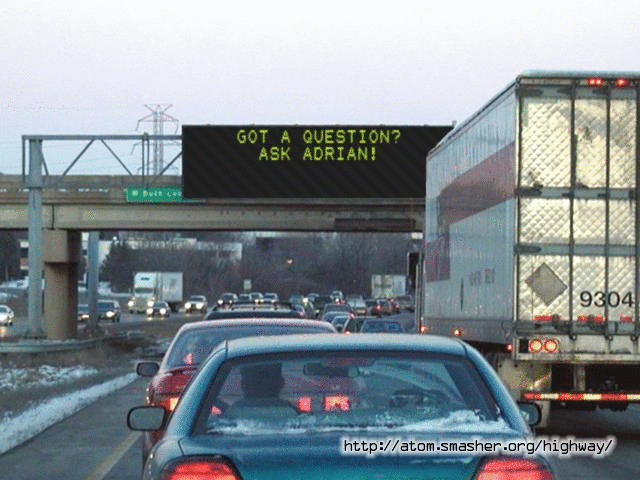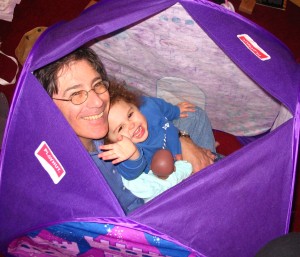Dear Adrian — How does group size impact process design?
How does group size impact process design?
Another issue of an occasional series—Dear Adrian—in which I answer questions about event design, elementary particle physics, solar hot water systems, facilitation, and anything else I might conceivably know something about. If you have a question you’d like me to answer, please contact me (don’t worry, I won’t publish anything without your permission).
Here’s a great question from Australian facilitator, trainer, and coach Steve Rohan-Jones about … The Three Questions! (Check out the link if you aren’t already familiar with The Three Questions. Otherwise, what you are about to read won’t make much sense.)
Good morning from Canberra, Adrian,
I have just read through The Power of Participation over one year after I received a signed copy from you!
In short, I have a question about The Three Questions. I understand the process both in singular and multiple form (combined with round tables). From my reading, The Three Questions appears to take some time (based on the amount of participants) with only one person speaking. This appears at odds with the aim to get people engaged in conversation.
I would also think – not a question just an observation – that group of 6 would be better. This would speed up the set piece of one person speaking and others listening, reduce the need for breaks and keep the energy going early in the day.
Can you clarify my understanding of The Three Questions?
I look forward to hearing from you.
Cheers
Steve Rohan-Jones
O2C Pty Ltd
Steve, I like your question. It highlights a key tension inherent in group process design: the tension between intimacy (going deep with a few) and discovery (uncovering the possibilities of the many). How does group size impact process design? Let’s explore this in more detail.
Valuable meeting outcomes
When people are meeting for a shared purpose, some of the potentially valuable outcomes include:
- Learning about each other.
- Being and feeling heard.
- Sharing with each other.
- Learning from each other.
The Three Questions focuses on #1, #2, and #3. I use it at the start of an event because we can’t learn effectively from our peers (#4) until we:
- have learned what they might have to offer (#1);
- feel safe sharing with them (#2); and
- have each had an opportunity to share our expertise and experience (#3).
Because each person gets the same amount of time to share their answers to The Three Questions with a group, the time needed to run the process is proportional to the group’s size. [I’m neglecting here the few minutes needed to a) explain the process and b) provide one or two short breaks for large groups.] In practice, I’ve found this restricts the maximum effective size of a single Three Questions group to 60 people. What if more than 60 people are present? Then you divide them into smaller groups and run multiple simultaneous The Three Questions sessions.
Even if we have 60 people or fewer, we may still decide to divide our group into several smaller groups and run multiple simultaneous sessions. Typically we’ll do this when time is a constraint.
For example, next month I’m leading a two-hour, ~200 person, participation techniques workshop. To cover multiple core techniques in two hours with this many participants, I will give them just a taste of The Three Questions by running 30+ concurrent 6-person groups. Everyone will know five former strangers much better after the ~20-minute session is over, but they won’t have learned more about the others in the room.
Trade-offs
So when designing a session or conference that includes The Three Questions, there is a trade-off between the time we have or want to allocate and group size. Why? Because we need to give each person sufficient time for meaningful sharing with their group (typically 1 – 2 minutes per person).
There’s no single answer for this design decision that’s optimum for all circumstances. At a multi-day conference, for example, it makes sense to run multiple simultaneous 50-60 person Three Questions groups for a couple of hours at the start of the event. Everyone in each group will learn important information about the interests and resources of their 50-60 peers. For a monthly board meeting, once a year I might run a single session with the ten board members to remind the group of each member’s “why?”. And at a one-day peer conference with ninety participants, perhaps three simultaneous 30-person sessions would be the way to go.
In some ways this design consideration is a parallel application of Jerry Weinberg’s Law of Raspberry Jam:
The wider you spread it, the thinner it gets.
We are looking for a balance between:
- intimacy — sharing deeply with a few people, making the format feel more like a conversation; and
- discovery — learning important things (interests and resources) about everyone in a large group, in a process that feels more like structured sharing.
Both intimacy and discovery have their benefits. So how does group size impact process design? By choosing the size of the groups using The Three Questions, it’s possible to select the balance that works for the design and constraints of each unique situation.



